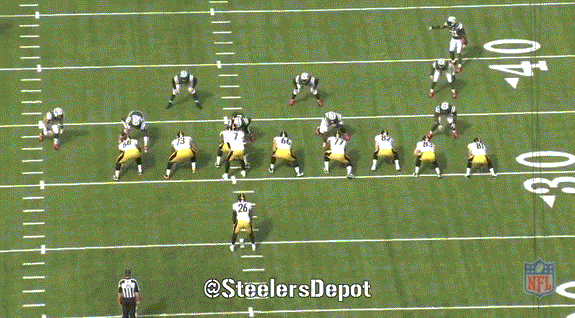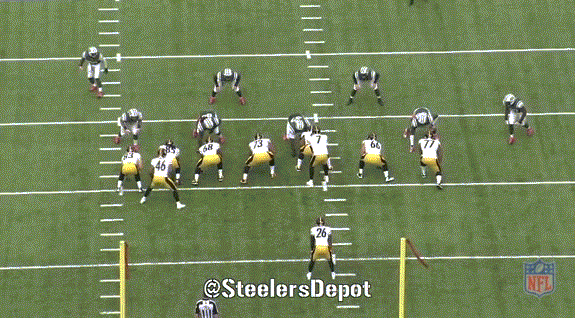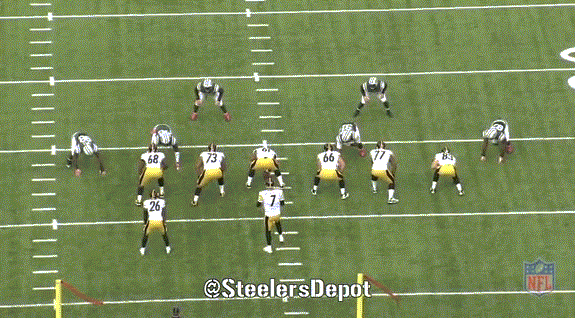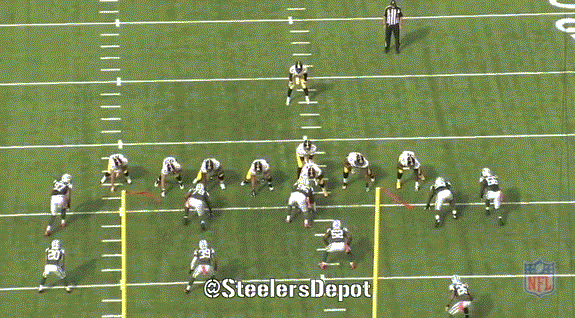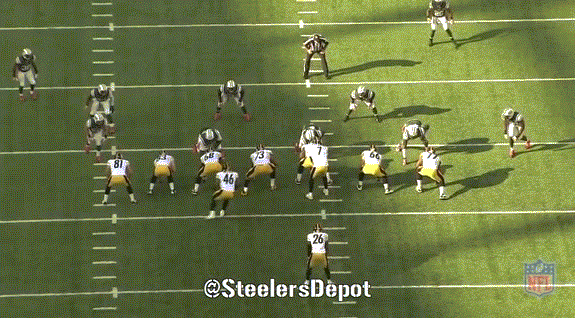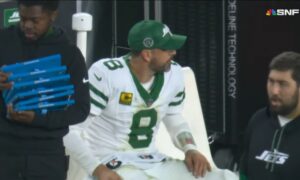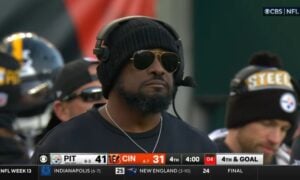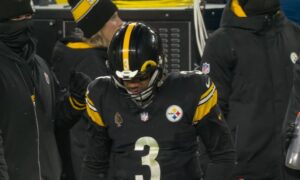By Matthew Marczi
Following the Pittsburgh Steelers’s first win of the season, head coach Mike Tomlin was highly complementary of his high-pedigreed yet inexperienced new tailback, Le’Veon Bell, who was making just his second career start. Such a dichotomy often sends Tomlin’s mind into a tailspin, as he loves to boast about pedigrees but also prefers to take a vow of silence when it comes to praising rookies.
More often than not, the stats sheet is the tie breaker, although such could hardly be said to be the case in this instance, as Bell finished with an anemic 2.1 yards per carry average on 16 carries, which equates to 34 total yards.
Yet Tomlin thought “he ran very well” when asked at his weekly news conference. He went on to lavish praise, in fact, saying
I thought the Jets provide some challenges in terms of run defense; they’re number two in the league, and they lived up to that. They’ve got some talented people up front. There weren’t many holes. I thought he did a great job of picking with vision and putting the ball where it was supposed to be and running with the type of demeanor that we desire. Obviously, the numbers don’t exhibit great success, but I thought it allowed us to have the type of balance necessary to complete splash plays, like the third-and-1 play-action to Emmanuel Sanders and so forth.
While Bell certainly deserves a lot of credit for the pittance that he was able to eke out on the ground, there is also something to be said for his inexperience, I think. It seems to me, particularly early on, that he could have run with greater patience and made better decisions as to which hole to hit, and this includes his first carry of the game.
Now, there were plenty of carries throughout the afternoon in which Bell had no room to run. This first carry is not one of them. While he still made a positive play out of it, however, he did not choose the most lucrative route. By the time Bell receives the ball, it is already fairly clear that David DeCastro and Marcus Gilbert have opened up a significant gap on the right side, and a late cut would have drawn off the linebacker for what could have been a big gain instead of a carry for just three yards through the clogged arteries of the left side.
The next time he gets a chance to carry, it is late in the first quarter and he has the hulking nose tackle Damon Harrison pushing Fernando Velasco right into his running lane, sandwiching him between his center and tight end Heath Miller. He squeezes through the tight alley for a yard.
He makes the correct read for a four-yard gain on the next play, but it is negated by a hold. The play after, however, I find quite interesting in the way it unfolded, and I find it hard to determine the blame.
It is a second and 19 play, and left guard Ramon Foster is pulling to the right. Bell has the backside defensive end trailing him, so he has to be quick, yet I still feel that he could have shown more patience on this run and gotten behind his blocker more.
Doing so would have afforded him the opportunity to cut inside the pulling guard rather than between Foster and Miller, neither of whom secure their blocks and allow the lane to close after just a four-yard gain. Had he had the patience on this play to cut inside Foster’s block, the play could have gone for double-digit yards. What is worse is that it spoiled another of Gilbert’s best blocks of the day, which, on this afternoon, were rare.
Later, on his first carry of the second quarter, he is faced with a one-on-one situation with the linebacker as the center and nose tackle battle. The linebacker is shaded somewhat heavily to the offensive left A Gap, yet Bell chooses to cut in that direction rather than take the right side, which appeared not only more intuitive, but more open.
On the play above, I give Bell full credit here for making the proper read to bounce this run outside rather than try to hit it up a middle that was quickly collapsing. I even give him credit for attempting to maximize the end of the run with a spin move that did not work. On the following play, however, he makes the wrong call trying to bounce it outside with three defenders already in pursuit. I see this as a cut your losses carry in which he should have taken what he could get and live to fight another down. Bell simply does not have the speed to break this one to the outside. Probably not many backs do.
On his last carry of the first half, he is dropped for a four-yard loss after Quinton Coples and Muhammad Wilkerson make quick work of Gilbert and DeCastro, just to remind you of the kind of blocking Bell had to work with for most of the contest.
He followed that up with his first carry of the second half being perhaps his best run of the day, as he simply hits the hole hard right up the middle for a seven-yard gain through a tight alley. Early in the fourth, however, it was back to being dropped for a loss, as Harrison once again beat Velasco cleanly.
Fortunately, he was able to finish off his day with another of his better runs, this time displaying some patience.
The Steelers are facing second and eight, attempting to run out the clock. The initial read does not leave Bell with many options, but he is able to hang back just long enough for a small crease to open in the A Gap between Velasco and DeCastro for a six-yard gain.
This article may seem highly critical of a rookie performance, and that is because it is. I chose to point these things out because I believe that Le’Veon Bell is capable of offering even more to this offense, and that he can average more than 2.1 yards per carry with this type of blocking if he trusts himself and his teammates more, displays a bit more patience, and allows the game to slow down enough for him to make better decisions on the fly. As critical as the above may be, I still came away from this game encouraged about what Bell will be able to turn into in the near future.

